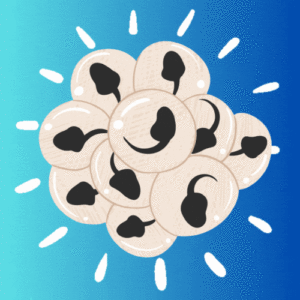
Learn about food chains and where tadpoles sit in them!
What are Food Chains?
Food chains are a way of showing how animals are connected to each other by what they eat. They also show the flow of energy within a certain environment. Food chains arrange plants and animals in an order of who eats who.
Let’s start at the very beginning of the food chain.
Plants take in carbon dioxide from the air and absorb sunlight. Through a process called photosynthesis, they use these to produce organic matter.

Some animals get their energy from plants (herbivores) and some from eating other animals (carnivores). Others eat a mix of both plants and animals (omnivores).

In many food chains animals get bigger the higher you go up the food chain. While many smaller animals feed on plants, larger animals tend to feed on the smaller animals and finally a top predator feeds on those animals. There are exceptions though, for example humans eat cows even though they are bigger than us!
Organisms in a food chain can be divided into two categories. Producers produce organic matter and their own food. Consumers consume the food that producers make, or they eat other consumers!
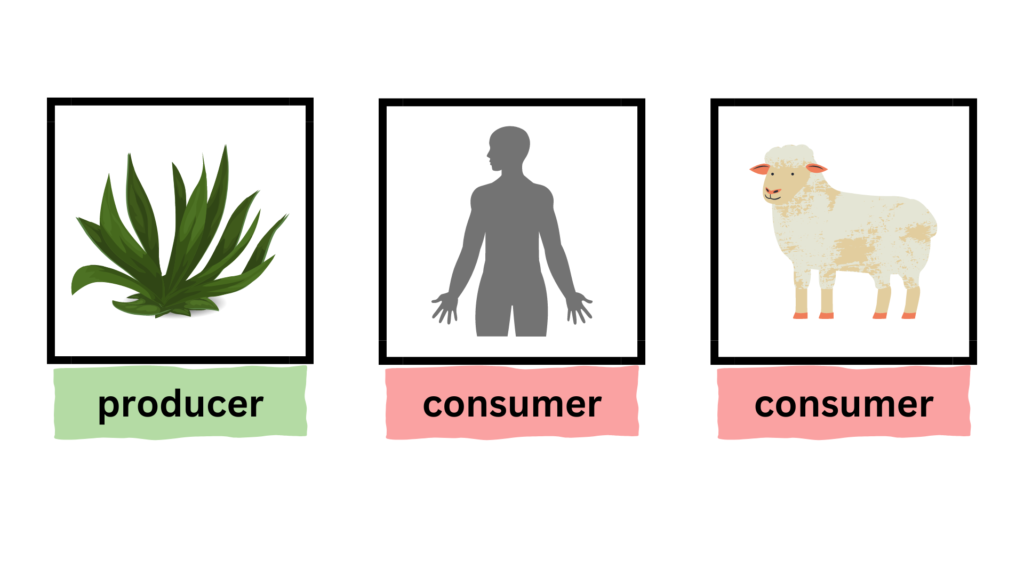
Levels in a Food Chain
There are different levels of consumers in a food chain. The animal that eats the plant is called a primary consumer. A secondary consumer eats the primary consumers and a tertiary consumer feeds on the secondary consumer.
Here is an example of a pond life food chain, including young tadpoles. At this stage in their life, they are primary consumers.
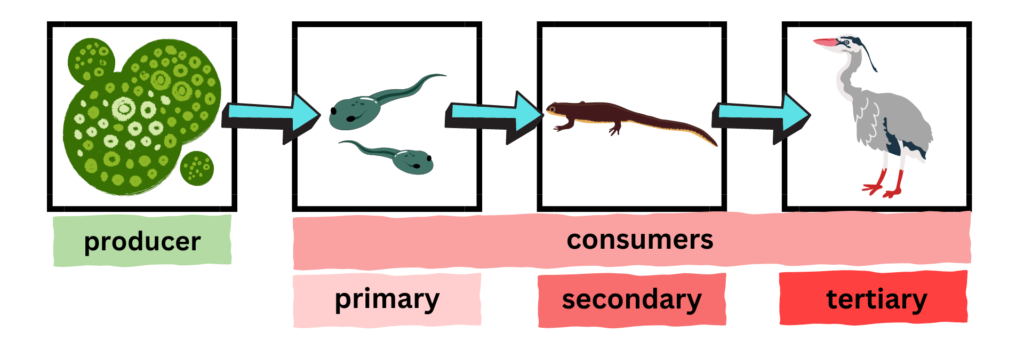
The arrows show who eats who in this habitat. Firstly, tadpoles eat algae, which are the producers in this food chain. The tadpoles are eaten by newts, which are in turn eaten by larger birds such as this heron. See how the tadpoles, newts and birds are consumers, but at different levels.
The tadpoles are primary consumers, as they eat the producer.
Food Webs
Often the connections between animals are more complicated than a simple food chain, because some animals eat more than one thing. We call these food webs, and an example of a pond food web can be seen below.
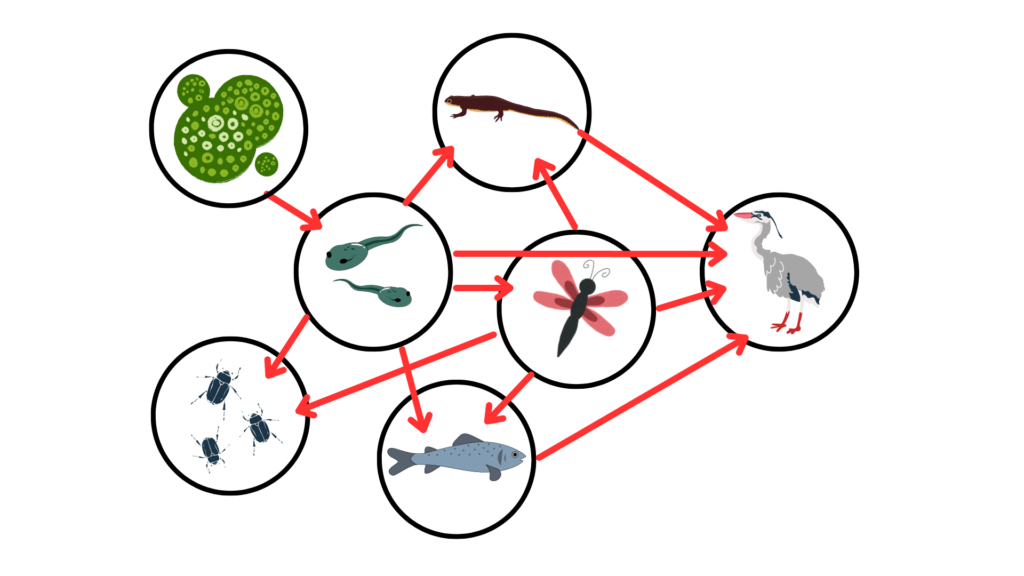
As you can see, lots of animals like to eat tadpoles and the bird eats most animals! In this case, the heron is the top predator. You can read more about tadpole predators here and what tadpoles like to eat here.
Quiz Time!
Results
We hope you now know more about food chains and how tadpoles fit into them! Click here to explore more topics.
#1. What is the name of the process where plants create organic matter from sunlight and carbon dioxide?
#2. What do food chains show? Select all that apply.
Select all that apply:
#3. Fill in the blank: “Young tadpoles can be classified as a ____ in a pond life food chain”.
#4. Why are the connections between plants and animals in real life more complex that simple food chains?
Want More on Food Chains?
Follow the links below to learn about more food chains!
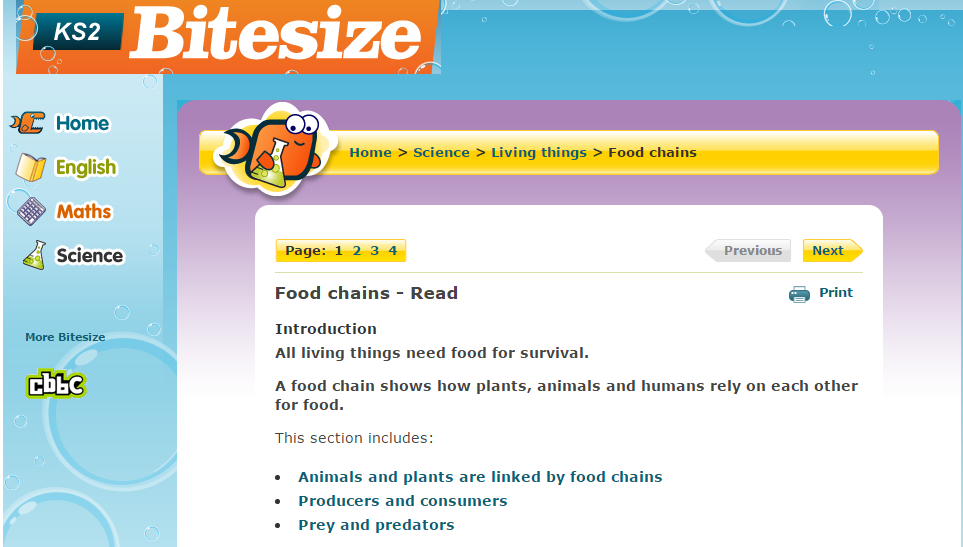
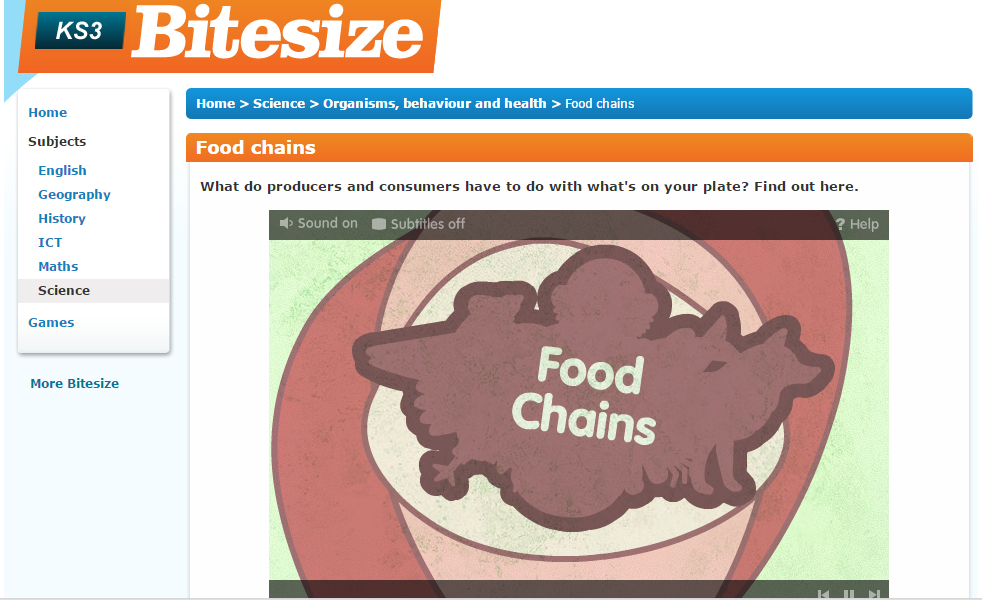
Remember to attribute photographs, videos or work where appropriate! This is not needed unless used online, but if you’re unsure please refer to the creative commons licence rules. For media credits for the images above, please refer to the next page.





